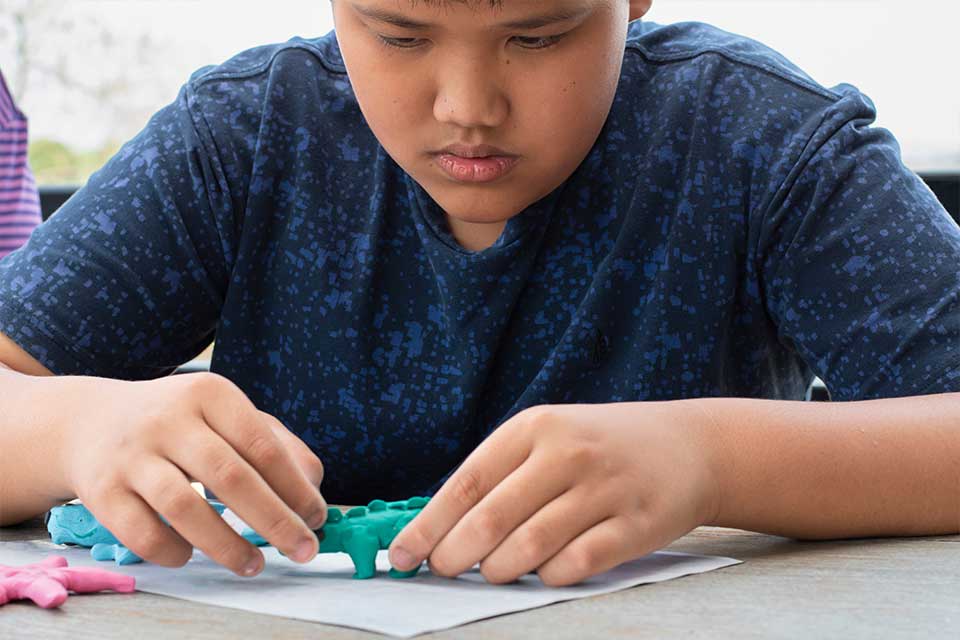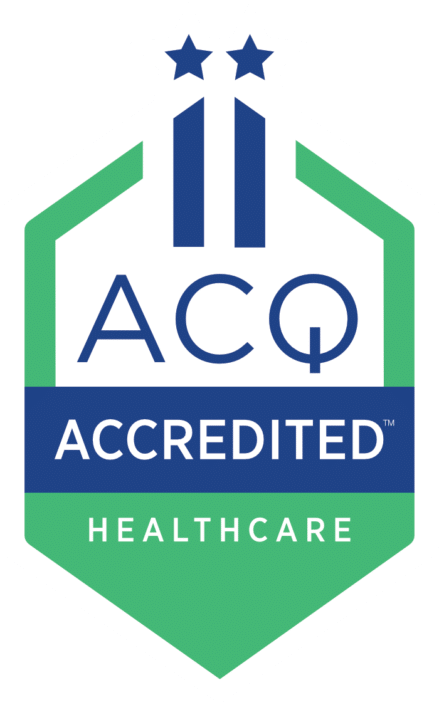Why is ABA Controversial? And Where Does ABtA Stand?
Applied Behavior Analysis (ABA) is a widely-recognized therapeutic modality for learners with autism, but some are skeptical of its efficacy due to misconceptions about methodology and practice. In this article, we’ll briefly explore the history of ABA therapy, address some criticisms of ABA, and explain where A Bridge to Achievement (ABtA) stands regarding each.
ABA Therapy History
ABA therapy traces its roots to the work of B.F. Skinner in the 1930s-1950s. Skinner’s research on operant conditioning demonstrated that behavior could be shaped through reinforcement, forming the foundation of behaviorism. His principles laid the groundwork for later therapeutic applications, including ABA, by showing how reinforcement and punishment can increase or decrease specific behaviors.
In the 1960s, Dr. Ivar Lovaas applied these behavioral principles to children with autism at UCLA. His early work focused on teaching communication and social skills through structured reinforcement, though it initially included aversive techniques – which are at the root of why ABA therapy was controversial. Lovaas’ 1987 study showed that intensive ABA therapy (40 hours per week) led to significant improvements in many children with autism, sparking widespread adoption of ABA but also drawing criticism for its methods.
Since the 1990s, ABA has evolved to emphasize positive reinforcement and individualized treatment plans. Today, ABA is recognized as a leading, evidence-based therapy for autism, endorsed by organizations like the U.S. Surgeon General. Modern ABA emphasizes ethical practices, family involvement, and person-centered approaches to improve the quality of life for individuals with autism.
What are the Criticisms of ABA?
Opponents of ABA therapy say it is overly rigid or robotic and that it only focuses on behavior correction – and, considering only the first iterations of ABA, their views have validity. But these are not modern-day truths. Let’s take a closer look at 10 ABA criticisms and misconceptions.
1. History of Aversive Techniques
Early versions of ABA therapy sometimes involved the “Lovaas method,” which included such unethical and harmful punishments as electric shock, slaps, being ignored or deprived, and stern verbal reprimands.
Modern ABA practitioners do not implement the Lovaas method and instead facilitate humane, evidence-based methodologies and abide by ethical standards that focus on the well-being of the learner. A “punishment” in behaviorism today encompasses strategies that reduce a behavior, such as taking away a preferred item – a consequence commonly practiced by parents of neurotypical children as well.
At ABtA, we vehemently oppose the use of aversive techniques and prioritize positive reinforcement. A well-researched “punishment” is introduced ONLY if all other strategies are not helpful; the learner’s behavior warrants it, such as self injury or mouthing; and the learner’s parent has provided input and/or permission. Our practitioners are all Board Certified Behavior Analysts (BCBAs) and Registered Behavior Technicians (RBTs) who strictly follow the Behavior Analyst Certification Board’s Code of Ethics and RBT Ethics Code, as applicable.
2. Normalization Concerns
Some critics believe ABA is designed to make autistic people behave in more neurotypical ways, which can feel dismissive of their unique identity. Today’s ABA practitioners argue that the therapy is not about forcing learners to act neurotypical but about respecting their individuality while helping them function more independently and develop skills that improve quality of life.
At A Bridge to Achievement, we practice a neuro-affirming, assent-based approach to ABA therapy. We acknowledge and respect neurodiversity and – instead of trying to change or normalize behaviors – we emphasize strengths, accommodate differences, and promote acceptance and self-advocacy.
3. Focus on Compliance
Critics argue that ABA focuses too much on compliance, potentially stifling a learner’s autonomy and individuality by teaching them to conform to societal norms rather than encouraging self-expression.
Supporters counter that ABA’s goal is to teach learners functional skills, including listening and following instructions, which are essential for independence and safety. They argue that fostering compliance does not mean erasing individuality but providing learners with tools to navigate the world effectively.
As mentioned, ABtA is an assent-based ABA practice. This means we seek the active participation and agreement of each learner. We respect their autonomy by regularly checking their comfort level and willingness to continue with a particular intervention, and make necessary adjustments based on their feedback.
4. Behavioral Conditioning
Opponents say the use of incentives and rewards in ABA therapy is dehumanizing, suggesting it reduces learning to behavioral conditioning, similar to how animals are trained. The worry is that this approach focuses too much on external compliance rather than internal motivation or meaningful emotional growth.
As a carrot-on-a-stick scenario, this argument is compelling – but that’s not the role of incentives and rewards in ABA therapy. There are several counterpoints here worth mentioning, beginning with ethics.
-
Ethics of Reinforcement
ABA practitioners emphasize that reinforcement must be individualized, respectful, and meaningful to each learner. Incentives and rewards are carefully chosen to align with the learner’s preferences and are not coercive or demeaning.
-
Natural Learning Tool
Positive reinforcement mirrors real-life learning processes; humans naturally respond to rewards. Neurotypical children often learn through praise, stickers, and treats, just as neurotypical adults are motivated by paychecks and social recognition.
-
Motivation & Communication Skills
Many learners with autism have difficulty with intrinsic motivation and social cues. ABA links positive behaviors with enjoyable outcomes, which can eventually lead to more intrinsic motivation over time.
-
Progression Toward Independence
Rewards are gradually faded over time; the use of external incentives is temporary. Learners intrinsically respond without being motivated by a reward.
-
Quality of Life
The purpose of ABA therapy is to improve a learner’s quality of life by teaching essential life skills. Rewards serve as helpful tools to build communication skills, social interaction, and self-care, which can be empowering long term.
5. Lack of Focus on Emotional Well-Being
People who disagree with ABA suggest that it focuses too much on changing behaviors without addressing the learner’s underlying emotional or psychological needs.
Proponents highlight that ABA therapy includes techniques that help learners express emotions, reduce frustration, and communicate more effectively, which can enhance their emotional well-being. Positive reinforcement, central to ABA, is designed to reduce stress and promote emotional growth.
The ABtA Vice President of Clinical Operations, Tara Laymon – who has a psychology license and trauma background – personally works with our BCBAs regarding a learner’s emotional or psychological challenges. We address mental health issues appropriately as they arise, within our scope of practice, and refer out when it is not.
Additionally, we employ Practical Functional Assessment (PFA) and Skill-Based Treatment (SBT). These approaches are, by design, compassionate and respectful. They consider a learner’s unique experiences, circumstances, and individual needs, and focus on whole-person care.

6. Intense Therapy Hours
ABA therapy often involves 20-40 hours per week, which some critics believe is too intense, leading to burnout for both the learner and their family.
While ABA can be intensive, proponents argue that the hours are individualized based on the learner’s needs and progress. Intensive therapy in the early years is shown to have long-term benefits, helping learners achieve greater independence and reducing the need for future interventions.
A Bridge to Achievement offers a diversity of programs because we understand that every learner is different. The number of ABA hours one learner needs is not equal to the hours needed by another.
7. One-Size-Fits-All Approach
Critics argue that ABA therapy can sometimes feel like a “one-size-fits-all” approach, not taking into account the unique personalities and needs of each learner.
In fact, ABA programs are highly individualized, with tailored treatment plans based on comprehensive assessments. Therapy is adapted to each learner’s strengths, challenges, and goals, ensuring that it’s not a generic approach.
At ABtA, we offer comprehensive ASD evaluations and skill assessments that inform tailored treatment decisions for each learner and family. Assessments usually take two to three hours, with some learners needing more than one assessment to determine the appropriate plan.
8. Effectiveness Varies
Critics point out that ABA therapy doesn’t work equally well for all learners, with some seeing limited progress despite significant investments of time and resources.
And we agree! Therapy outcomes vary – as with any intervention – and emphasize that ABA has a strong evidence base demonstrating that it remains one of the most effective therapies for autism, particularly when implemented early and consistently.
A Bridge to Achievement is dedicated to the autism community. We weave ABA therapy into all of our services and programs because of its proven benefit to communication and social interaction skills, self-regulation, self-care, independence, tolerance building and, for some learners, academics.
9. Limited Focus on Social and Relational Development
Critics argue that ABA’s focus on measurable behaviors can overlook critical aspects of emotional bonding, relationships, and creative play, which are vital to a child’s holistic development.
Proponents highlight that many programs include social skills support, helping children learn to build relationships and engage in social interactions. ABA often incorporates play-based learning to support both cognitive and social development.
All of our programs at A Bridge to Achievement include some level of social skills development – it depends on the needs and goals of the individual learner. Building Bridges for ages 3 to 6 is a learning-through-play, therapeutic preschool alternative. BRIDGES, which stands for Building Relationships, Independence, Determination, Group & Essential Skills, is for pre-teens, teenagers, and young adults. Our Social Skills Groups are for kids and teens who want to work on essential social competencies in a supportive and structured environment.
10. Cost & Accessibility Issues
ABA therapy can be expensive and is not always accessible to all families, raising concerns about equity and fairness.
Supporters agree that ABA therapy cost and access are real challenges but note that insurance coverage for ABA has improved in many regions. At A Bridge to Achievement, we accept Blue Cross Blue Shield (BCBS), MedCost, and Medicaid.
Additionally, we have three learning centers from which we provide therapeutic services:
- University Center: 8530 Cliff Cameron Dr, Charlotte, NC 28269
- Pineville Center: 10502 Park Rd #150, Charlotte, NC 28210
- Winston-Salem Center: 1420 Plaza Dr, Winston-Salem, NC 27103
Evidence-Based, Individualized & Empowering
At ABtA, we hear, see and understand the concerns of critics, and empathize with caregivers who – out of love for their learner – feel compelled to ask, “Is ABA therapy bad?” As advocates for the autism community and for your loved one, the ABtA team welcomes this and all of your questions. And we look forward to sharing our reassurances that the ABA therapy provided by ABtA is compassionate, highly-individualized, adaptive, evidence-based, and empowering.
ABA therapy can be life-changing. It offers proven opportunities for learners and families to thrive in their unique way and achieve goals they otherwise may not have reached. Want to learn more? Connect with us or request services. Support starts here.








